A luau is a traditional Hawaiian party or feast that is usually accompanied by entertainment. It’s an exciting event that captures the essence of Hawaiian culture, showcasing vibrant music, hula dancing, and a delectable array of food. Synonymous with tropical allure and Polynesian traditions, luaus serve as a window to the rich history and practices of Hawaii. But what exactly constitutes a luau, and why is it such a central element of Hawaiian culture? In this article, we will dive deep into the fascinating world of luaus, exploring their historical significance, traditions, and unmissable food and performances that ensure every luau is an unforgettable experience.
History of the Luau

The origin of the luau can be traced back to ancient Hawaiian culture. Before the mid-nineteenth century, traditional Hawaiian society adhered to strict religious taboos, known as ‘kapu,’ which designated certain foods as forbidden for women and commoners. Men and women ate their meals separately, and certain regional foods were forbidden to women. These included pork, certain types of fish, and most significantly, bananas However, in 1819, King Kamehameha II abolished these kapu, symbolically dining with women and commoners at a feast. This revolutionary event marked the beginning of the luau. The feast was named after one of the main dishes served, ‘luau,’ a delicacy made of chicken and young taro leaves cooked in coconut milk.
Evolution of the Luau Over the Years
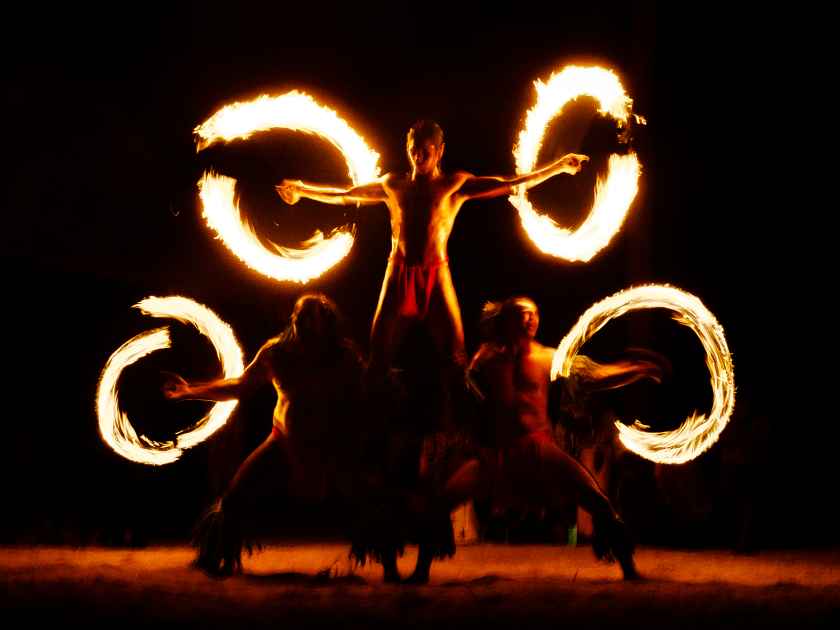
Luau has transformed from these simple communal meals into vibrant and elaborate parties we see today, beaming with hula dances, live music, and a plethora of Hawaiian delicacies. It continues to be a symbol of community and celebration but with added modern touches like fire knife dancing, buffet-style meals, and even tourist packages that allow visitors to experience this unique aspect. The evolution of the luau over the years is a testament to the dynamic spirit of Hawaiian culture.
Elements of a Luau
Traditional Attire and Adornments
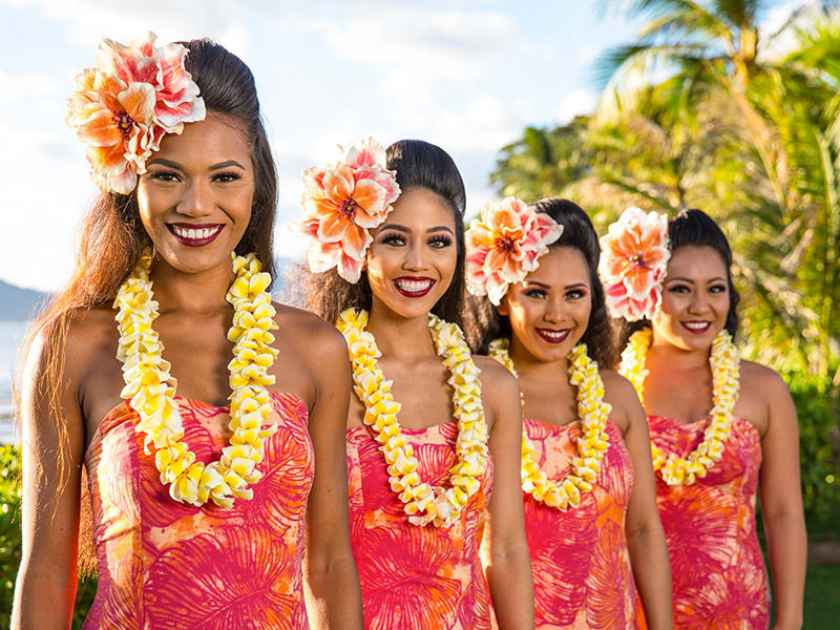
The traditional attire at a luau is vibrant, and colorful, and embodies the spirit of Hawaiian culture. Men typically wear a brightly colored aloha shirt with khaki shorts, while women don an aloha print dress known as a ‘muumuu.’ Children are often dressed in similarly themed attire. Lei, a garland or wreath strung together with flowers, leaves, shells, or seeds, is a traditional Hawaiian adornment worn by both men and women. In addition to the lei, women sometimes wear a ‘haku lei,’ a floral garland worn on the head.
As a guest, you’re not expected to dress in traditional Hawaiian attire, but a relaxed, tropical dress code is usually appreciated. Men often wear aloha shirts, while women opt for loose, floral dresses, often referred to as “muumuus”. Lei necklaces are also a common sight, adding a touch of authenticity and fun to the event. While traditional Hawaiian attire and adornments can enhance the atmosphere, the most important aspect of a luau today is to participate wholeheartedly in the spirit of “aloha” – embracing the warmth, hospitality, and joy that the event signifies.
Local Music and Hula Dance
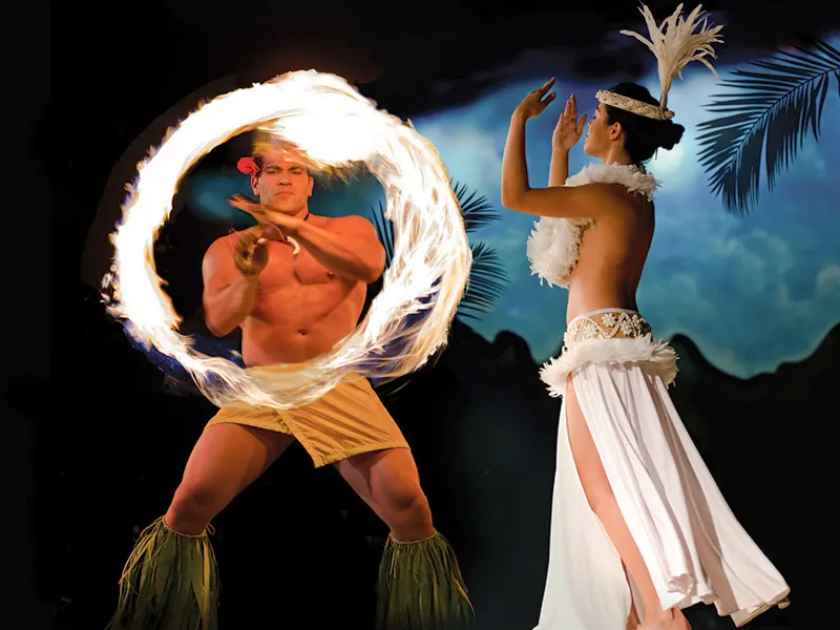
Music plays a vital role in every luau, setting the rhythm and mood of the celebration. Traditional Hawaiian music, with its unique blend of melodies, is often accompanied by ukulele, steel guitars, and slack-key guitars. This music is not just a form of entertainment, but a way to tell stories, pass down legends, and maintain cultural traditions.
Hula dance, another quintessential element of a luau, is a captivating expression of art and storytelling. There are two types of Hula – Hula ‘Auana and Hula Kahiko. Hula ‘Auana, the modern style, is usually performed with Western-influenced music and tells stories of romance, praise, or devotion. In contrast, Hula Kahiko is the ancient form, performed with traditional chants, drum beats, and rhythmic dances that honor the gods and nature. Both the music and the hula dance at a luau are embodiments of the Hawaiian spirit, serving as living connections to the vibrant history of the islands.
Traditional Luau Dishes
Kalua Pig
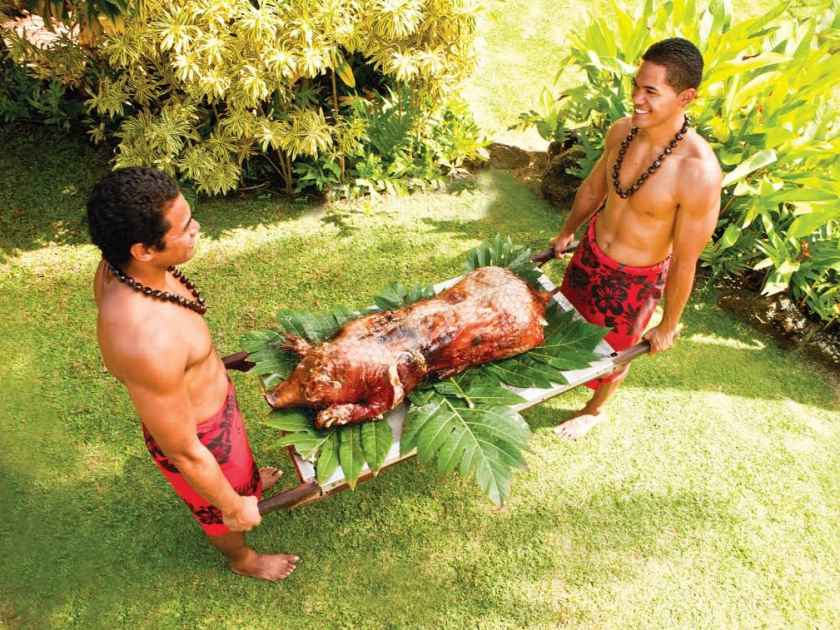
At the heart of any luau is an abundance of traditional Hawaiian food, which is as much a feast for the eyes as it is for the palate. The star of the show is undoubtedly the kalua pig. This centerpiece dish is prepared by slow-cooking a whole pig in an underground oven, or ‘imu,’ resulting in succulent, smoky, fall-off-the-bone meat.
Poi
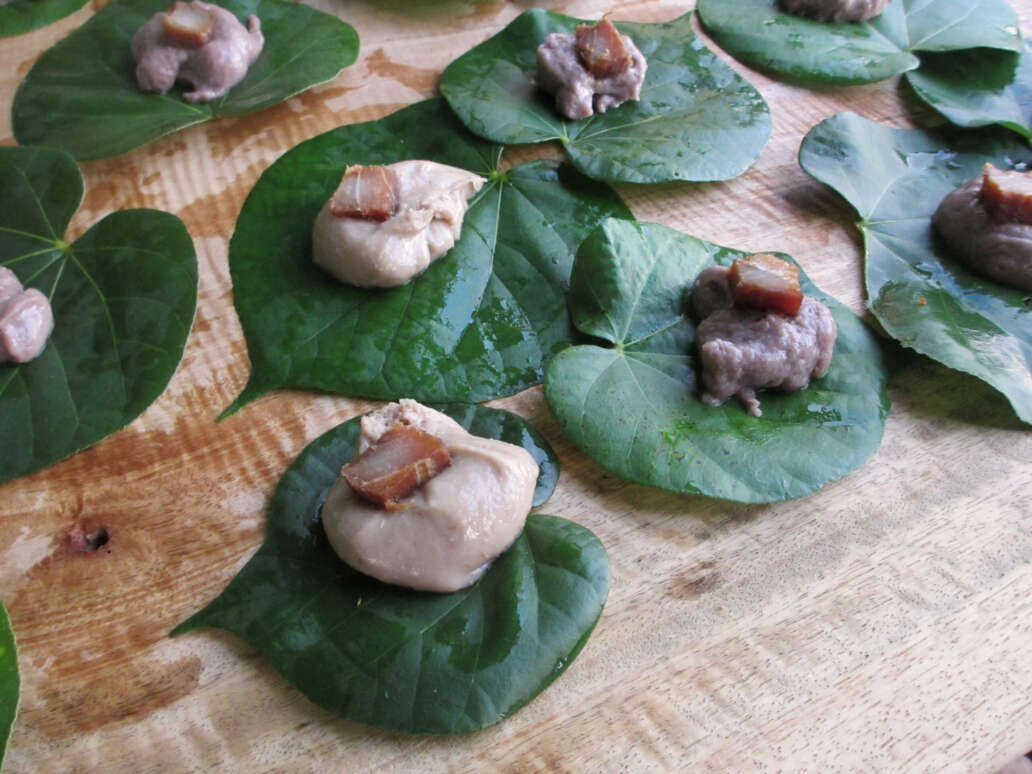
Another quintessential luau dish is poi, a starchy paste made from the fermented root of the taro plant. It is a staple in Hawaiian cuisine, boasting a subtly sweet and slightly sour flavor. Poi is often served alongside lomi salmon, a refreshing salad featuring salted salmon, ripe tomatoes, and finely chopped onions, all marinated in a tangy citrus dressing.
Poke
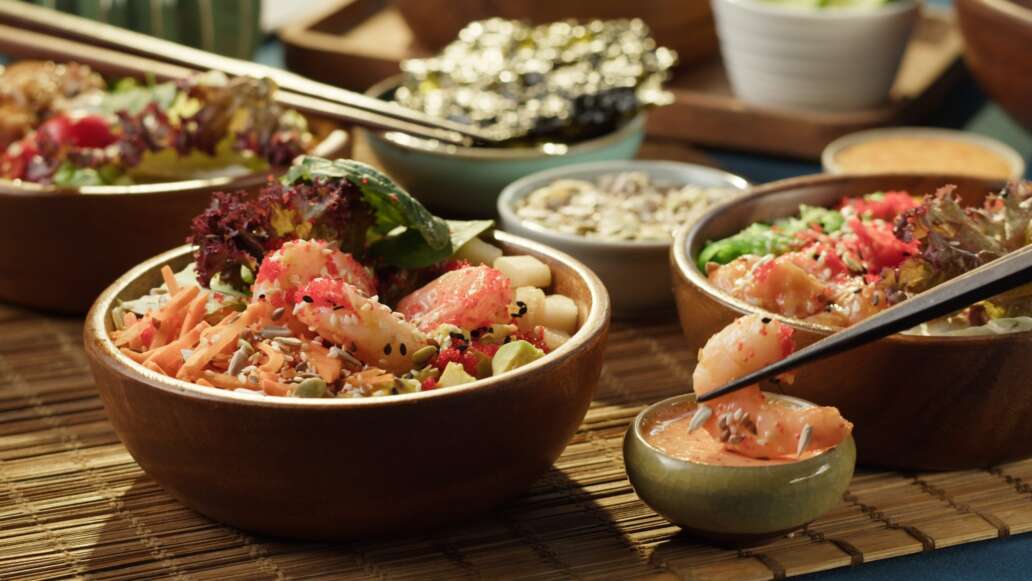
Seafood lovers will delight in poke, raw fish (usually tuna) diced and mixed with soy sauce, green onions, and sesame oil. Accompanying these dishes, guests may find laulau, a bundle of pork or chicken wrapped in taro leaves and steam-cooked to perfection.
Haupia
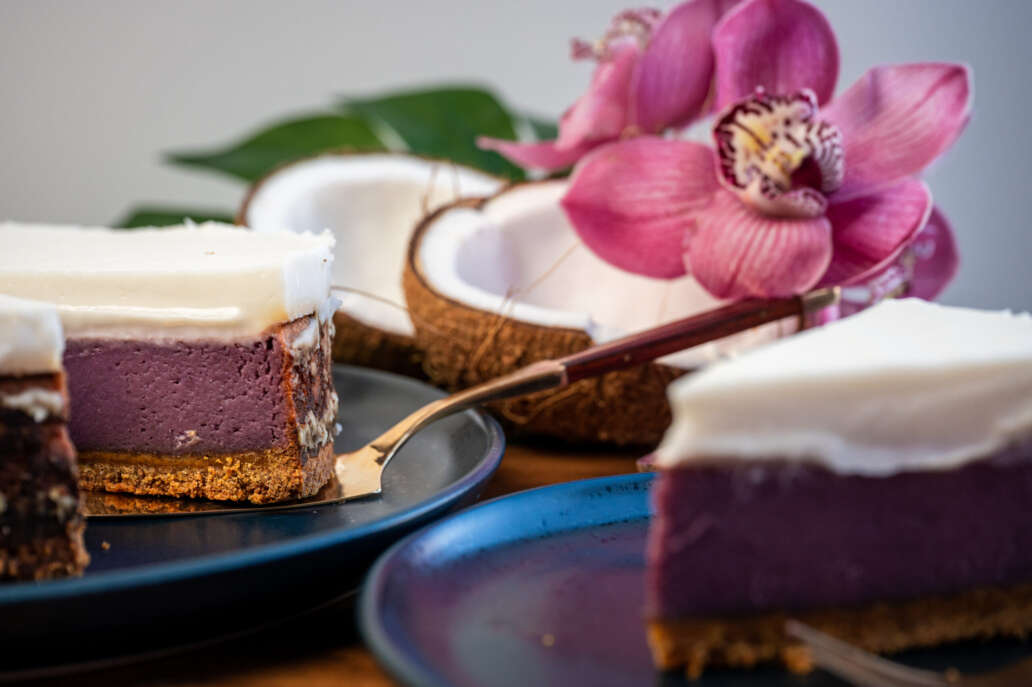
No luau would be complete without a taste of haupia, a silky coconut milk-based dessert that serves as the perfect sweet end to the feast. These iconic dishes, each with its unique flavors and preparation methods, contribute to the overall sensory experience of a luau, celebrating the bounty of the Hawaiian islands and the culinary traditions passed down through generations.
Role of Food in Luau Celebrations
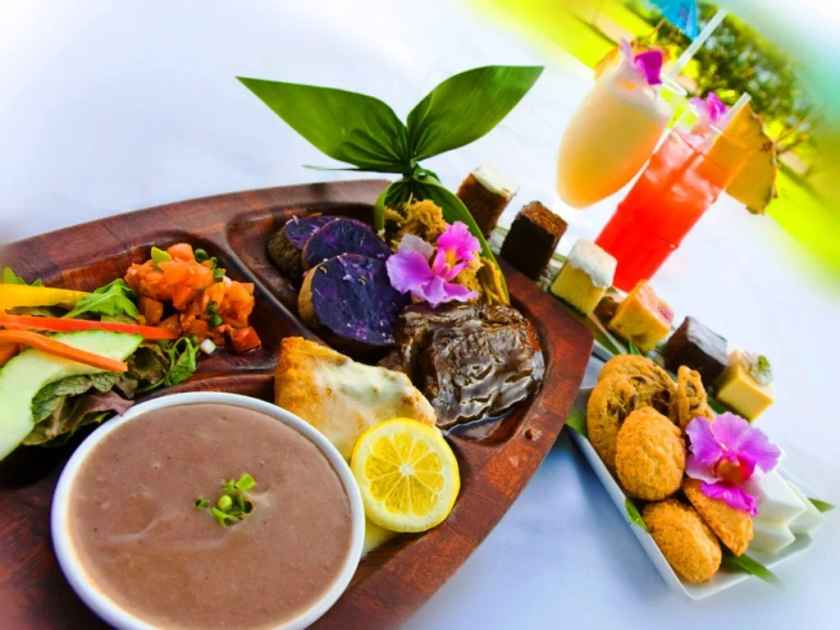
Food plays a central role in luau celebrations, serving not only as sustenance but also as a representation of the Hawaiian culture’s richness and diversity. From the traditional ‘kalua pua’a’ (roasted pig) cooked in an underground oven to ‘Poi’, a staple Hawaiian dish made from taro root, each food item is a testament to Hawaii’s culinary heritage. The act of preparing and sharing these dishes embodies the spirit of ‘ohana’ (family) and ‘aloha’ (love), central tenets of the luau, and Hawaiian culture as a whole. The luau feast is a culinary journey that invites participants to experience Hawaii’s history, traditions, and community through their taste buds, making food one of the most significant elements of these vibrant celebrations.
Significance of a Luau in Hawaiian Culture
Luau gatherings are not merely parties but are a reflection of the shared history, traditions, and values of the Hawaiian people. Luaus serve as a stage for the vibrant Hawaiian culture to thrive, showcasing the island’s unique music, dance, art, and cuisine. They celebrate milestones, honor ancestors, and welcome visitors, binding people together in a joyous, harmonious social fabric. The exchange of stories, laughter, and aloha at a luau fosters a strong sense of belonging and unity among attendees. Moreover, luaus helps to keep Hawaiian heritage alive and thriving, passing on age-old traditions to younger generations and sharing the richness of Hawaiian culture with the world. Thus, the luau is more than a feast; it is a vibrant testament to the enduring resilience, hospitality, and spirit of the Hawaiian people.
Learn More: The Cultural Significance of Luaus in Hawaii
How to Experience a Luau
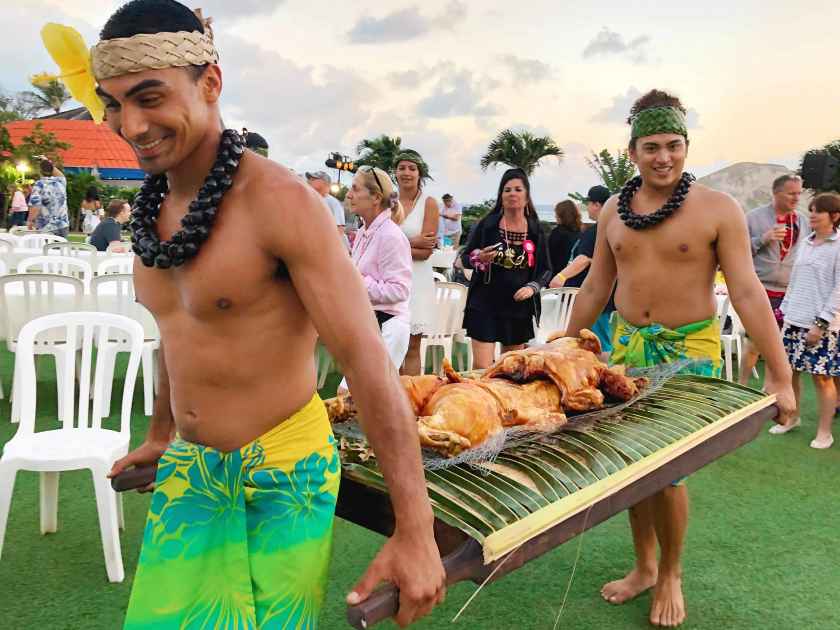
Experiencing a luau is a magical journey into the heart of Hawaiian culture, a must-do for visitors to these enchanting islands. One of the easiest and most authentic ways to participate in a luau is to book a tour through HawaiiActivities.com.
HawaiiActivities.com offers a variety of luau experiences across the different islands, each showcasing a unique aspect of Hawaiian heritage. From the mesmerizing fire-knife dance in Oahu’s Polynesian Cultural Center Luau to the majesty of the Royal Kona Resort Luau on Big Island, there’s a feast for every taste. It’s more than just a party; it’s a sensory feast that immerses you in Hawaiian traditions and hospitality!
Tips for Tourists Attending their First Luau

- Dress Appropriately: While luau parties are casual, wearing beach-themed attire or Aloha wear (Hawaiian printed shirts or dresses) will add to the festive mood. Remember, evenings in Hawaii can get a bit cool, so carry a light jacket or wrap.
- Arrive Early: Luaus are popular, and getting there early can help you secure the best viewing spots for the entertainment.
- Participate: Don’t hesitate to take part in the activities. Whether it’s learning the hula dance, trying your hand at traditional Hawaiian arts and crafts, or getting up on stage for some good-natured fun, participation will enrich your luau experience.
- Taste Everything: Luau feasts offer a wide variety of traditional Hawaiian dishes. Don’t be afraid to try something new. You might discover a new favorite!
- Respect the Culture: Remember, a luau is not just a party; it’s a traditional Hawaiian event with deep cultural significance. Respect the customs, listen to the stories, and appreciate the spirit of Aloha that permeates throughout the celebration.
- Take a Lei Home: As a memento of your first luau, consider taking a Lei home. Just remember to ask before you take any flowers or leis, as some may be ceremonial or part of the performance.
- Bring a Camera: Luaus are colorful, vibrant, and full of photo opportunities. Don’t forget your camera to capture these unforgettable memories!
Step into a Rich Tapestry of History, Culture, and Tradition
The vibrant music, the rhythmic dance, the delicious feast, and the genuine warmth and hospitality all contribute to an immersive experience that leaves a lasting impression. As a guest at a luau, you’re not just an observer; you become an integral part of this joyous celebration, sharing in the Aloha spirit. Luau offers a unique, enriching experience— a chance to partake in an age-old tradition, to make new friends, and to feel a profound connection with the land and its people. There’s truly no better way to appreciate the rich cultural heritage of Hawaii!




